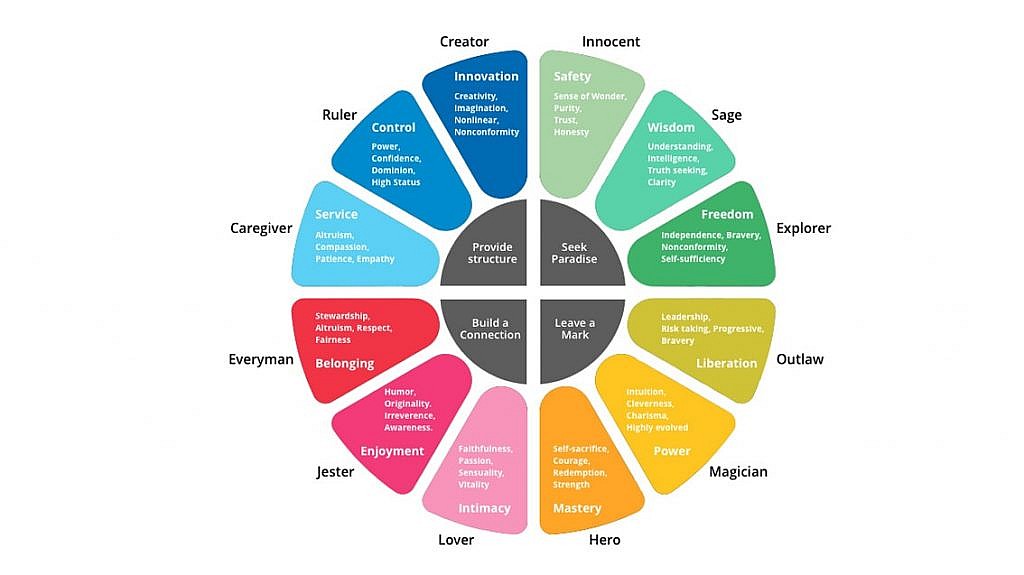
Now is a Very Good Time to Revisit Your Brand
I think we can all agree that the world has shifted quite significantly in the past few months. From the far-reaching effects of the COVID-19 pandemic, the difficult journey of much needed social reform, and the pressures of new economic realities, we are no longer operating under the status quo. The silver lining here is that this may not necessarily be a bad thing for your organization. Adversity and change, when viewed the right way, can become a powerful catalyst of growth and transformation.
All of our organizational situations have changed and so have those for our clients and customers. From the way that we solve problems and continue to serve those clients to the ways that we message and communicate have been impacted. As we are rapidly trying to adjust, take a moment to ask a very important question, “Is the essence of your brand still the same and are you living up to your brand promise?”
Right now, is a perfect time to re-examine your brand to ascertain what impact all these environmental and societal changes have had upon your brand’s perceptions. Not to mention, it’s a legitimate way to validate if you are still on track and even more importantly, gauging the progress your organization has made towards establishing your “why.”
Let’s Get Started
So, now you just might be wondering, “What is the best way to get started?” Well, a good place to begin this process is to start by asking some key questions and exploring the responses. This will help to provide some feedback and valuable insight as to how your brand is viewed, perceived, and ultimately, lived! A few of these questions that merit further exploration and will get you started on your journey include:
What is it about your organization that inspires your team to do what they do?
When it comes right down to it, your teams and your people are the essence of your “why” and very much, the key to who you are as a brand.
When your organization inspires and gives people a reason to come to work, not just a place to go to work, you are achieving something special. This should not be the domain for only the lucky few, but the result of an energizing and inclusive culture.
It’s through this kind of company culture that people are willing to invest and give their all, their discretionary effort, their passion, and their best work, not simply because they have to, but because they really want to. Instilling that reason to come to work, your people will come together and find ways to breathe your brand vision to life.
Take a deep look in the mirror and ask yourself, “What are you doing as an organization to foster and instill this kind of passionate culture?”
Who is Your Perfect Customer?
Knowing who you serve should shape almost every aspect of your brand and brand identity. If you have not yet developed buyer personas profiles of your ideal customer, now is the time to start. If you have fortunately already built this framework, now is the time to revisit. Remember, buyer personas change and evolve over time and so must the way you view and approach them.
Be sure to determine what your buyer personas value most from your brand. Are they looking for cost savings or innovative solutions? Do they want to build and develop deep relationships with their partners or simply have a relationship of convenience? By understanding your ideal buyer’s motivations, pain points, and priorities, you can create and visualize a relevant identity.
If you need some additional guidance of where to begin, a few key questions you should be asking include:
- Who are your customers?
- What do they do?
- Where do they spend time?
- Where do they receive their information from, and just as importantly, how do they receive it?
- What do your customers want from a brand and what are their expectations?
- How do they want to communicate with a brand?
- What does their budget and/or determination of value look like?
The better we understand our customers, what they look like, and how we can solve problems and provide value for them, the more fundamental our approach to marketing can become because we can now put the customer at the center of our universe. As they say, knowledge is truly power.
What pain points do you solve for?
There is a distinct reason why businesses and consumers are searching for new products and services and its incredibly simple. They have unmet needs, period. If their current situations were perfect, they wouldn’t be searching or even interested in the how or why you can help.
By identifying the reason “WHY” they need to or would want to engage with your organization, you effectively gain the tools to shape your message to satisfy those unmet needs. Most importantly, the focus always needs to be around creating value for your clients and putting their needs and successes firmly in the center of the story.
What is your brand’s personality?
An easy way to define brand personality is to think about a “human set of personality characteristics” that are representative of the brand. These characteristics help people to better understand and build connection to a brand.
Human personality is rarely single dimensional, and the same can be said for brand identity. Depending on mood or purpose, brands tend to be a carefully crafted blends of several personality or value types.
As you start to think through your own brand’s personality, a good place to start is by looking at the 12 key personality archetypes and how those might correlate to some household brands that you are already familiar with.
Brand archetype wheel courtesy of https://mapandfire.com

For example, we might liken Campbell’s Soup or Johnson & Johnson to the Caregiver just as we could relate Lego or Adobe to the Creator archetype. By thinking of respective brands, you start to understand how these brands embody human characteristics with which we can identify.
What is your brand’s story?
Your brand stories are an important component of your overarching branding. Start first by considering some of the basics, your Who, What, When, Where, and Why. It makes sense to think though some of your literal history like why you were founded in the first place and then go deeper to explore the role you play in your customer’s life.
Ultimately, you brand story should make your customer the hero. What have you brought to the table to do that?
What are the five words that describe your brand – OR – what are the five words that you want people to see you as?
Can you think of five words or adjectives that can help describe your brand’s personality? At a starting point, take a step back a bit further and think about the words your clients use to describe working with you or your team? How has your actions and interactions with them made them feel?
As an example, let’s look at the hotel brand, Ritz-Carlton, known the world over for their die-hard commitment to customer service. If they were to create their own list of words, those they might choose could include:
- Quality
- Consistency
- Core Values
- Commitment
- Customer Service
Think back to the very beginning, the origin story of your brand so to speak. What was it that drove your founder(s) to start the organization in the first place? How is your company different? By examining the culture and the values that are ingrained throughout your organization, you can begin to develop a list of descriptive words and start to put a face around your brand.
What is your voice and tone?
Knowing and understanding the voice and tone of your brand is an absolute imperative. This literally becomes the guidelines for how you message, market, and speak with your customers. Regardless of where messaging is coming from, whether that be from traditional of digital sources, there needs to be a consistency that helps your audience understand who you are and be able to “feel” your brand’s personality.
A great exercise to explore voice and tone is the “This, Not That” game. For example, your brand might be authoritative, but not bossy; whimsical, but not flighty; practical, but not basic; caring, but not overly emotional. By thinking thought some of the things your brand is and is not, you can start to feel some of its multidimensional nature.
Don’t be afraid to look closer to home and consider your internal customers as well for some inspiration. They are a great testing ground and can provide timely feedback.
This is truly about tailoring message to your customers and ensuring the way that you communicate across multiple channels is appropriate for your audience and the nuances of that specific channel. For example, your voice and tone may need to adjust slightly across social channels from the way you convey information in printed materials.
The “how” you communicate is equally as important as “what” you communicate. In the end, it’s ultimately about creating connection and helping facilitate understanding.
Why do your customers come to you and why do they trust you?
This is where having some one-on-one conversations becomes very powerful. You can plausibly learn more in a few direct client conversations than from a mountain of survey and quantitative data. Take the time to ask, “why?”
By conducting client interviews or talking with your sales teams and those with direct client contact within your organization can be an important tool for learning why your customers ultimately decide to choose your organization. By examining the factors that lead to trust, you will uncover important clues to your brand identity.
Taking an internal approach here as an example, some of the “trust factors” why our clients choose to do business with us include:
- Consistency
- Deep industry expertise
- Creative problem solving
- Transparency
- Flexibility
Identifying your “trust factors” is an important tool for defining why your brand is different and why you win.
While this is far from an exhaustive list or a complete brand exercise, it becomes a good starting point to garner a quick “pulse-check” on your brand. From here, you can start to understand the current state of your brand and prioritize what work needs to happen next.
Remember, a brand is not a solely static entity, but one that will evolve overtime, even if ever so slightly. It Is always a good idea to revisit your brand pillars from time to time. With the monumental environmental and societal changes that have happened in such a short period of time, it has become that much more necessary to know where your brand stands, how you message and market, and how you will impact and hopefully, stay positively involved in the lives of your clients.
Hopefully, these questions point you in the right direction around understanding your brand and your “why.” Need more examples or exercises to help explore the state of your brand? Feel free to reach out and connect.
If you are seeking strategic event communications solutions, contact us at hello@centrifugemedia.com

Mike Dowd